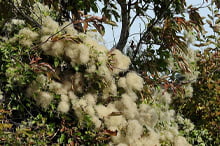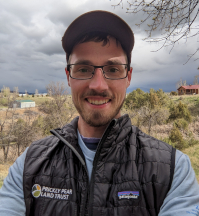No products in the cart.
A Thicket

And a Continent of Birds
Story and Photos by Shane Sater
Unless you know better, the thicket between the Boundary County road and the Kootenai River seems unremarkable. Most people hurry past, ignoring it completely. As a kid, that was how I saw it, too: a green blur as I drove by with my dad to look for moose on the Kootenai Wildlife Refuge. But things are different now. As an adult and a field biologist, I can recognize the patterns. The green blur has come into focus.
A narrow strip between sun-baked grain fields and the slow-moving river, it’s blessed with an abundance of sun and water, and it’s chock-full of native plants: a wild garden of fruiting shrubs. Here in early September, fall songbird migration is in full swing. The thicket is loaded with fruits and the bushes burst with birds whose lives span the North American continent. Let’s take a look.
Up close, the thicket shouts the abundance of the harvest season in the languages of a dozen fruits and seeds. Wood’s roses hold starbursts of firm scarlet hips, and elderberries droop with the weight of chalk-blue berries. Clematis vines clamber over everything, reaching enthusiastically above my head and cascading downwards with feathery seedheads. Below, the knee-high snowberries glow with luminous white fruits.
This content is available for purchase. Please select from available options.
Register & Purchase Purchase Only
Register & Purchase Purchase Only

